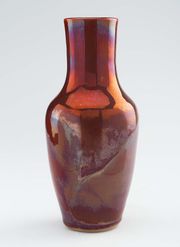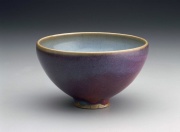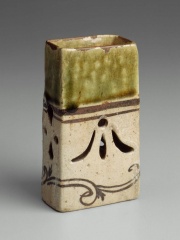Difference between revisions of "Copper oxide glaze"
Jump to navigation
Jump to search
| (One intermediate revision by the same user not shown) | |||
| Line 3: | Line 3: | ||
== Description == | == Description == | ||
| − | Under oxidizing conditions, copper oxide will produce blue (with potassium oxide) or green (with [[lead oxide]]) glazes | + | Under oxidizing conditions, copper oxide will produce blue (with potassium oxide) or green (with [[lead oxide]]) glazes. Under reducing conditions, copper oxide will produce red or or black glazes (Hodges 1988). |
== Synonyms and Related Terms == | == Synonyms and Related Terms == | ||
| Line 9: | Line 9: | ||
glaçure à l'oxyde cuivre (Fr.); vidrado de óxido de cobre (Port.) | glaçure à l'oxyde cuivre (Fr.); vidrado de óxido de cobre (Port.) | ||
| − | [[File:92.5467-SC23761.jpg|thumb|]] | + | [[File:92.5467-SC23761.jpg|thumb|Japanese dish<br>MFA# 92.5467]] |
==Resources and Citations== | ==Resources and Citations== | ||
Latest revision as of 14:09, 4 July 2022
Description
Under oxidizing conditions, copper oxide will produce blue (with potassium oxide) or green (with Lead oxide) glazes. Under reducing conditions, copper oxide will produce red or or black glazes (Hodges 1988).
Synonyms and Related Terms
glaçure à l'oxyde cuivre (Fr.); vidrado de óxido de cobre (Port.)
Resources and Citations
- Henry Hodges, Artifacts: An Introduction to Early Materials and Technology, Ronald P. Frye, Kingston, Canada, 1988


